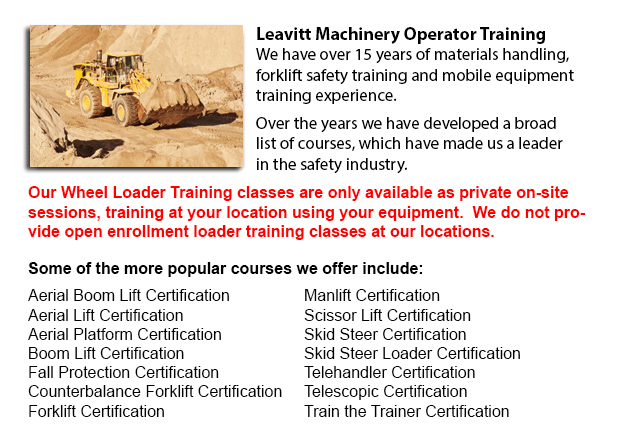
Lift trucks are available in several various units which have various load capacities. Nearly all typical forklifts used inside warehouse settings have load capacities of 1-5 tons. Bigger scale units are utilized for heavier loads, like loading shipping containers, may have up to fifty tons lift capacity.
The operator can make use of a control to raise and lower the forks, which are also called "forks or tines." The operator can even tilt the mast so as to compensate for a heavy load's propensity to tilt the tines downward to the ground. Tilt provides an ability to work on bumpy ground as well. There are yearly competitions meant for skilled lift truck operators to contend in timed challenges as well as obstacle courses at local forklift rodeo events.
General use
All forklifts are rated for safety. There is a specific load limit and a specific forward center of gravity. This essential information is provided by the maker and placed on the nameplate. It is essential cargo do not go beyond these details. It is prohibited in lots of jurisdictions to tamper with or take out the nameplate without getting permission from the lift truck maker.
Most forklifts have rear-wheel steering in order to enhance maneuverability. This is particularly effective within confined areas and tight cornering areas. This particular type of steering varies rather a bit from a driver's first experience together with other motor vehicles. Since there is no caster action while steering, it is no needed to utilize steering force so as to maintain a continuous rate of turn.
Instability is another unique characteristic of lift truck use. A constantly varying centre of gravity happens with each movement of the load amid the lift truck and the load and they must be considered a unit during utilization. A forklift with a raised load has centrifugal and gravitational forces which may converge to lead to a disastrous tipping mishap. In order to avoid this from happening, a lift truck should never negotiate a turn at speed with its load raised.
Forklifts are carefully built with a cargo limit for the tines. This limit is lowered with undercutting of the load, which means the load does not butt against the fork "L," and also lessens with fork elevation. Generally, a loading plate to consult for loading reference is positioned on the lift truck. It is unsafe to utilize a lift truck as a worker hoist without first fitting it with specific safety equipment such as a "cherry picker" or "cage."
Lift truck utilize in warehouse and distribution centers
Forklifts are an important component of distribution centers and warehouses. It is vital that the work surroundings they are placed in is designed to accommodate their efficient and safe movement. With Drive-In/Drive-Thru Racking, a lift truck must go in a storage bay that is many pallet positions deep to put down or obtain a pallet. Operators are normally guided into the bay through rails on the floor and the pallet is located on cantilevered arms or rails. These tight manoeuvres require trained operators so as to complete the job safely and efficiently. Because each pallet needs the truck to go in the storage structure, damage done here is more frequent than with different types of storage. Whenever designing a drive-in system, considering the measurements of the fork truck, together with overall width and mast width, should be well thought out in order to be certain all aspects of a safe and effective storage facility.
-
Heavy Equipment Training Vernon
Heavy Equipment Training Vernon - The two most common kinds of heavy equipment training are categorized into the categories of equipment; equipment which is fashioned with tracks and those with rubber tires. The tracked vehicle are heavy duty machine... More -
Aerial Lift, Boom Lift, Man Lift, Scissor Lift Training in Vernon
Lift tables or scissor platform lifts could lift up both people and materials vertically. They are most often utilized in industrial, construction and commercial environments. Usually, the use of a scissor lift is to lift and lower materials from one... More -
Crane Operator Classes Vernon
Crane Operator Classes Vernon - Crane operator training is for operators and supervisors of overhead lifting equipment. The course is suitable for both current and new operators. Course content addresses relevant provincial, state and federal safety... More -
Zoom Boom Training Vernon
Zoom Boom Training Vernon - Zoom Boom Training focuses on correctly training potential operators on variable reach forklifts. The training objectives consist of gaining the knowledge of the machine's physics and to be able to define the tasks of the... More -
Skid Steer Ticket Vernon
Skid Steer Ticket Vernon - The lift arms on the skid-steer loader are situated alongside the driver together with pivots at the back of the driver's shoulders. These features makes the skid-steer loader different than the traditional front loader. Be... More -
Manlift Ticket Vernon
Manlift Ticket Vernon - The Elevated Platforms and Manlifts Certification course helps to provide the needed training on the safe operating procedures, work practice, rules and regulations regarding the daily activities for the operators of this mach... More -
Scissor Lift Ticket Vernon
Scissor Lift Ticket Vernon - The scissor forklift has been a great advantage to many businesses in view of the fact that the effort and manpower to run one of these machines is very minimum. Furthermore, numerous workplace injuries have been prevente... More -
Aerial Lift Safety Training Vernon
Aerial Lift Safety Training Vernon - There are roughly 26 to 30 construction fatalities in North America due to the utilization of aerial lifts. Nearly all of the individuals killed are craftsmen like for example painters, electrical workers, laborer... More

Forklift Training Vernon
TOLL FREE: 1-888-254-6157
Vernon, British Columbia
forklifttrainingvernon.com
Email Us
About Us


